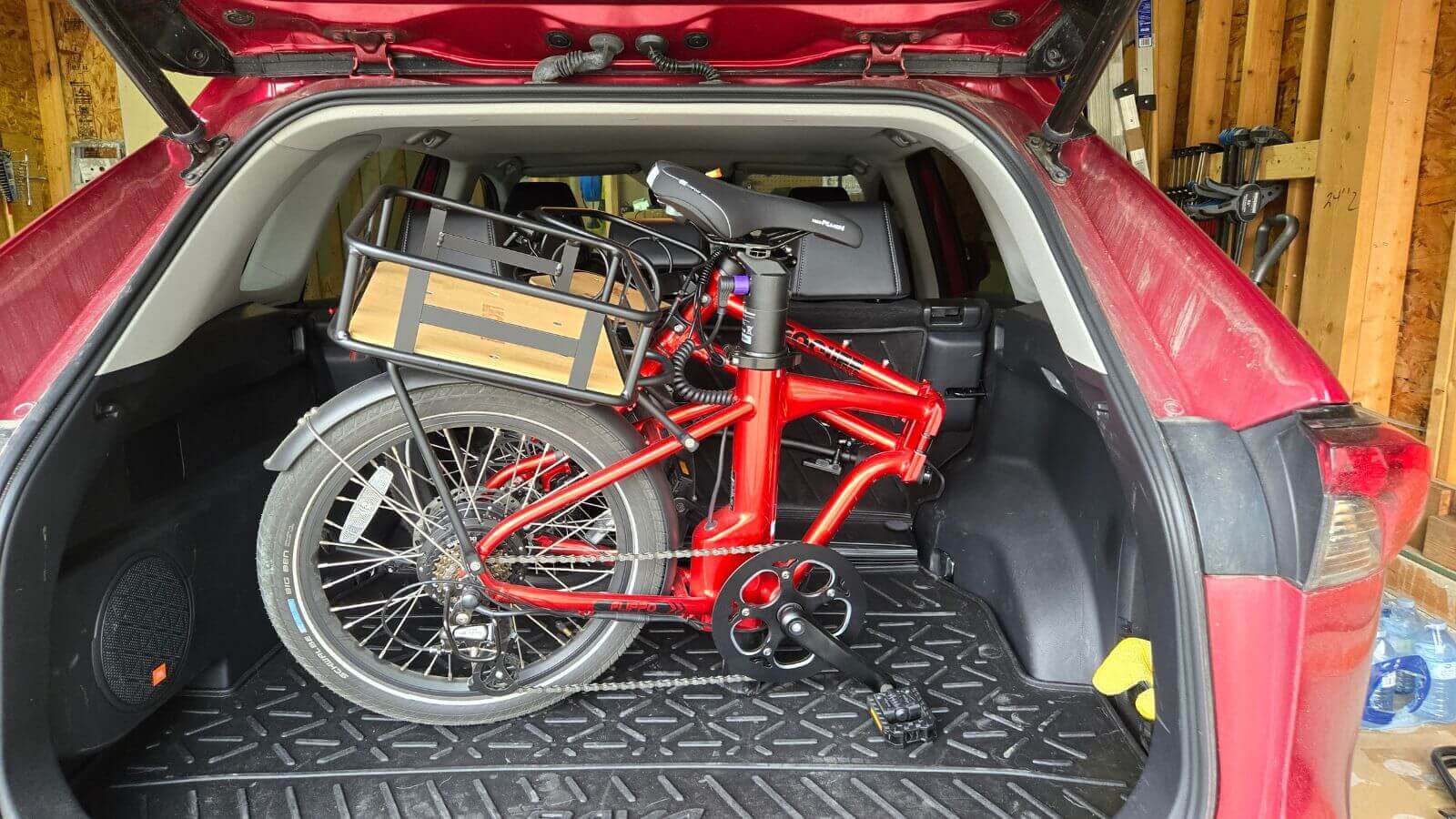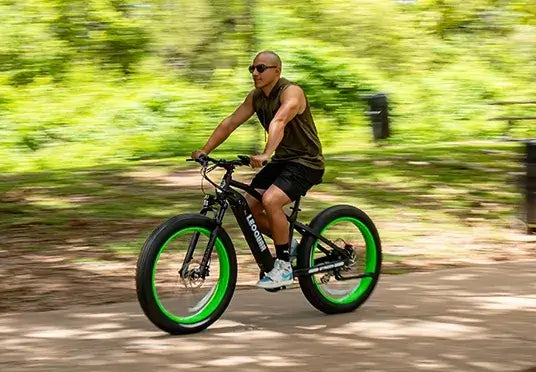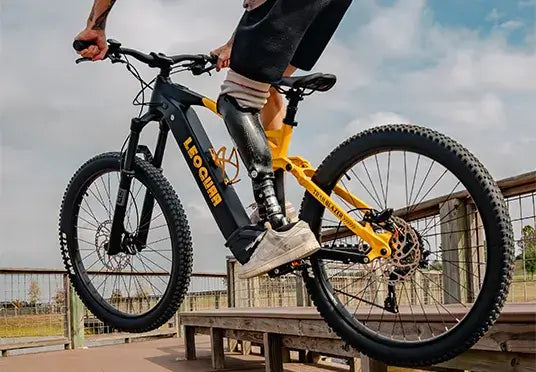
The ABCs of Electric Bike Shipping: Rules, Battery Restrictions, and What’s Allowed
Why You Need to Ship Your Electric Bike Safely
You need to ship your electric bike. Maybe you're moving to a new city, selling it to someone far away, or planning an amazing trip where you want to ride in a different place.
The big question is always the same: How do you ship it without breaking it or breaking the law? How to ship an eBike safely involves more than just putting it in a box. You need to remove the battery, choose the right packaging, and follow strict shipping rules. This guide covers everything you need—from battery watt-hour limits to picking the right shipping company—so you can ship your electric bike without worry.
The main problem isn't the bike itself. It's the lithium battery that powers your bike. These batteries are called dangerous materials by shipping companies, so they have lots of rules that can be confusing.
Don't worry about it. We ship electric bikes all the time and know exactly how to do it right. This guide will teach you the important rules, show you how to pack everything step by step, and help you pick the best shipping company.
You're in the right place to learn everything you need to know. At Leoguar, we’ve shipped thousands of electric bikes across the U.S. and internationally. We know how to meet all legal and logistical requirements—from federal shipping regulations to safe battery handling. Our expertise helps riders ship their electric bikes safely, confidently, and without hassle. This guide reflects real-world experience, not just generic advice.
Electric Bike Battery Rules and Shipping Restrictions
The scariest part of shipping electric bikes is dealing with the battery. Let's make these rules simple so you can feel confident about shipping. Knowing why these rules exist will help you ship successfully.
Why Batteries Are Dangerous Materials
All big lithium batteries, like the one on your electric bike, are called "Dangerous Goods" or "Hazardous Materials." This sounds scary, but there's a good reason for it. These batteries hold tons of energy in a small package.
If they get damaged, they can catch fire. That's why shipping companies and the government made special rules to keep everyone safe. These aren't just suggestions - they're laws.
You have to follow them to protect everyone who handles your package. For complete battery transport rules, refer to the official U.S. Department of Transportation guidelines on lithium battery shipping.
The Watt-Hour Number Matters Most
Almost every shipping rule depends on one important number: your battery Watt-hour rating. This tells you how much energy your battery can store. You need to find this number before you do anything else. For more battery safety tips, visit our guide on preventing eBike battery fires.
Here's how to find it:
Check the Label: Look at the sticker on your battery. Companies have to put the Watt-hour rating on there, usually shown as "Wh." Most electric bike batteries are between 400Wh and 700Wh.
Do the Math: If you can't find the Wh number, look for Volts and Amp-hours instead. Then use this simple formula:
- Volts x Amp-hours = Watt-hours
- For example: 48V x 14Ah = 672Wh
This number decides exactly how you can ship your battery.
What Battery Size Can Be Shipped by Ground?
Most major carriers allow lithium batteries up to 300Wh to be shipped via ground if properly packed and labeled. Batteries over that limit may still be allowed, but only if you obtain the correct shipping permits or use specialized services. Always confirm the battery capacity on your label before choosing a shipping method.
Ground Shipping vs Air Shipping
How your package travels makes a huge difference in what rules apply. Shipping by truck is much easier than shipping by plane, which is why you can't take your electric bike on regular flights.
| Shipping Method | Battery Rules |
|---|---|
| Ground Shipping | This is the normal way to ship electric bikes in the U.S. and Canada. Batteries up to 300Wh can usually be shipped by truck when packed and labeled correctly. Even bigger batteries can be shipped if you have the right permits, which special shipping companies can handle. |
| Air Shipping | This method has very strict rules. Any lithium battery over 100Wh cannot go on passenger planes. This means all electric bike batteries are too big for regular air shipping. Cargo-only planes can carry them, but you need lots of special paperwork and permits that regular people can't get. |
Common Carrier Comparison: Shipping an Electric Bike
| Carrier | Accepts eBike? | Battery Policy | Notes |
|---|---|---|---|
| FedEx | Yes (Ground) | Battery must be under 300Wh or removed | Recommend using FedEx Ground for eBikes |
| UPS | Yes (Ground) | Battery must be labeled & separated | Best to use specialty packaging |
| USPS | No | Does not ship lithium batteries over 100Wh | Not recommended for eBike shipping |
| BikeFlights | Yes | Handles eBikes with proper documentation | Specializes in bike & eBike shipping |
For almost everyone shipping their own bike, ground shipping is the only choice that makes sense.
How to Pack Your Electric Bike for Safe Shipping
Good packing is absolutely necessary. It keeps your expensive bike safe and makes sure you follow all the shipping rules. We've packed thousands of bikes and learned the best way to do it.
Get the Right Supplies
Having good materials before you start makes everything much easier. Don't try to save money on cheap supplies because it's not worth the risk.
Electric Bike Shipping Box: This is the most important thing you need. Don't use a regular box from the store. Get a special double-walled bike box from a bike shop or specialty shipping company like BikeFlights.
Packing Materials: You need lots of bubble wrap, foam tubes for the bike frame, strong tape, and zip ties. Tools: Get a set of Allen wrenches, a pedal wrench, and a torque wrench for putting everything back together.
Taking Your Bike Apart
You don't need to take the whole bike apart, just the big pieces so it fits safely in the box. Follow these steps carefully.
- Remove the Pedals: Use a pedal wrench and remember that the left pedal turns backwards to come off.
- Handle the Handlebars: Either take them off completely or just turn them sideways so they're parallel with the top tube.
- Remove the Front Wheel: Loosen the nuts or quick-release and carefully take off the front wheel.
- Lower the Seat: Push the seat down as far as it goes, or take it out completely if it's still too tall.
- Remove the Battery: This is super important - unlock the battery and slide it out of the bike frame.
Pro Tip: Put small parts like bolts and washers in labeled plastic bags and tape them to the part they came from so you don't lose anything.
Protect the Frame
Your goal is to stop metal parts from hitting each other. Anything loose will scratch and dent your bike while it's being shipped.
Wrap the frame tubes with foam and secure it with tape or zip ties. Use bubble wrap on weird-shaped parts like the gears and brake handles. Put the front wheel next to the frame with cardboard between them.
Use zip ties to attach the handlebars and wheel to the frame so they can't move around.
Pack the Battery Right
This is the most important step for safety and following the law. You can't just throw the battery in the box with the bike.
First, cover the battery connections with electrical tape to prevent short circuits. Then put the battery in its own strong cardboard box - the original box is perfect if you still have it. If not, use a small tough box and fill empty space with foam so the battery can't move.
This battery box goes inside the main bike box, but it has to be secured so it stays in place. Some shipping companies want the battery in a completely separate package, so always check their rules first.
Choosing the Right Electric Bike Shipping Company
Can FedEx or UPS Ship Electric Bikes?
Yes—both FedEx and UPS offer ground shipping for electric bikes within the U.S., but there are restrictions. Most carriers will only accept eBikes for shipping if the battery is removed and packed separately. They also require specific labels for lithium batteries. For international or air shipments, you'll need to check directly with the carrier, as special permits may be needed.
Regular shipping companies like FedEx and UPS, or special bike shipping services. Your choice depends on your budget, how comfortable you are with the rules, and how much work you want to do.
Your Main Choices
Regular companies like FedEx Ground and UPS Ground will ship electric bikes. But you have to get your own box, pack everything correctly, and put on the right dangerous material labels for the battery.
Special services like BikeFlights work as your shipping partner. They use the same trucks as UPS but give you the box, shipping labels, and step-by-step help. This makes everything much easier for a little extra money.
Shipping Company Comparison
This table shows the main differences to help you decide.
| Feature | FedEx Ground / UPS Ground | BikeFlights (Special Service) |
|---|---|---|
| Best For... | People who like to do things themselves and understand dangerous material rules. | First-time shippers or anyone who wants help with everything. |
| Battery Policy | You must know all the rules and put on the right labels yourself. | Simple process where they figure out the right service and give you proper labels. |
| Packaging | You find your own box and packing materials. | You can buy a complete kit from them with box and padding included. |
| Typical Cost | $150 - $350+, depends on weight and distance. | $175 - $400+, often similar price but includes more help. |
| Insurance | Only $100 included, expensive to add more. | $100 included, easy to add more coverage at good prices. |
| Labels | You get and put on all labels yourself, including dangerous material labels. | They give you all the right labels already filled out. |
Using a Fulfillment Partner or 3PL
If you regularly ship electric bikes or run an eBike business, partnering with a fulfillment company (3PL) that specializes in lithium battery shipments can simplify the process. These services can handle warehousing, custom packaging, shipping label prep, and international compliance—all under one roof. This is especially helpful for brands selling to multiple countries or through marketplaces like Amazon or Shopify.
Still unsure which option fits your needs? Here's a quick task-based comparison between handling shipping on your own and using a full-service provider:
| Task | DIY via UPS/FedEx | Using BikeFlights |
|---|---|---|
| Remove battery? | ✅ Must do it manually | ✅ Included in guidance |
| Label requirements? | ⚠️ Must research yourself | ✅ Pre-filled by service |
| Packaging guidance? | ❌ None | ✅ Step-by-step support |
| Compliance risk | ⚠️ Higher risk | ✅ Lower risk |
| Ease of use | 😓 Complex | 😌 Beginner-friendly |
Can You Ship an eBike to Hawaii or Internationally?
Yes, but it’s more complicated. Shipping an eBike to Hawaii or overseas often involves additional fees, carrier limitations, and stricter battery shipping regulations. Most carriers require you to use air freight via certified logistics providers that can handle lithium batteries. Always check the destination country’s import rules to avoid unexpected issues.
International shipping often involves stricter customs regulations and airline restrictions, especially because most passenger planes don’t accept lithium batteries over 100Wh. Instead, cargo-only flights and certified international logistics providers are required. Always confirm the destination country’s import rules before shipping and consider pre-approving shipping documentation to avoid customs delays.
How Much Does It Cost to Ship an Electric Bike?
The typical cost of shipping an electric bike ranges from $150 to $400 for domestic shipping in the U.S., depending on the shipping distance, package dimensions (DIM weight), and carrier fees. Specialty services like BikeFlights may charge a slightly higher base price but often include pre-printed labels, better packing materials, and battery handling—saving you time and reducing compliance risks.
Tip: Shipping cost is affected more by box size than actual weight. Using a compact, e-bike-specific box can help reduce DIM weight and lower the final cost.
Don't Make These Common Electric Bike Shipping Mistakes
After shipping thousands of electric bikes, we've seen people make the same costly mistakes. Avoid these problems to make sure your bike arrives safely.
1. Using a Weak Box
A regular cardboard box from the hardware store isn't strong enough. Electric bikes weigh 50-70 pounds, and regular cardboard will break under that weight. You must use a double-walled bike box made for heavy bikes.
2. Not Taking Pictures
Before you pack anything, take lots of photos of your bike from every angle. Then take more photos while you're packing to show how you protected everything. These photos are your best proof if something goes wrong and you need to make an insurance claim.
3. Guessing About Labels
Don't guess which labels you need. Shipping a lithium battery without the right labels is against federal law. For electric bikes with the battery in the same box, you almost always need a UN 3481 label and a Class 9 Lithium Battery label.
If you're not sure, Leoguar recommends trusted services like BikeFlights that specialize in eBike shipping and meet all federal regulations. We’ve partnered with logistics experts to ensure riders get support throughout the process.
4. Not Buying Enough Insurance
Most shipping companies only include $100 of insurance, which won't cover your expensive electric bike if it gets lost or damaged. Always buy extra insurance to cover what your bike is really worth. The small extra cost is worth the peace of mind.
5. Letting Parts Move Around
After you seal your box, shake it gently. If you hear things rattling around inside, open it back up and add more padding. Loose parts are the main cause of scratches and dents during shipping.
Pro Tip: Always upgrade your insurance
Basic shipping insurance usually covers up to $100, which may not be enough to protect a high-end electric bike. It’s worth adding extra coverage for peace of mind—especially when shipping internationally or using third-party services.

Quick Reference: How to Ship an eBike
✔️ Remove battery and pack in separate box
✔️ Choose a shipping method that accepts lithium batteries
✔️ Check your battery’s watt-hour rating
✔️ Use a double-wall bike shipping box
✔️ Apply the correct hazardous material labels
✔️ Insure your shipment for its full value
Your Final Electric Bike Shipping Checklist
You're almost ready to ship your electric bike. Go through this list to make sure you didn't miss anything.
- [ ] Battery Wh Known: You found your battery's Watt-hour rating
- [ ] Bike Taken Apart: Pedals, handlebars, and front wheel are removed and secured
- [ ] Frame Protected: All parts are wrapped and can't move
- [ ] Battery Packed Safely: Connections are taped and battery is in its own padded box
- [ ] Box is Secure: Box is well-taped and passes the shake test
- [ ] Labels On: All shipping and dangerous material labels are visible
- [ ] Insurance Bought: Bike is insured for its full value
Shipping an electric bike takes more care than a regular package, but you can definitely do it. Follow these expert tips and you can be confident that your bike will arrive safely, legally, and ready for your next ride.
Frequently Asked Questions
1. Can I ship my electric bike with the battery attached?
No, you should always remove the battery from your electric bike before shipping. Most shipping companies require the battery to be packed separately in its own padded box with proper dangerous material labels. This keeps everyone safe and follows shipping laws.
2. Can I ship an electric bike on a plane?
No, most passenger planes do not allow lithium batteries over 100Wh. If you need to ship your eBike by air, you’ll have to use a cargo-only airline and obtain special permits for the battery.
3. What size battery can I ship by ground?
Most shipping companies allow lithium batteries up to 300 Watt-hours to be shipped by ground truck when properly packaged and labeled. Larger batteries may require special permits that professional shipping services can handle for you.
4. Do I need special labels for shipping electric bike batteries?
Yes, lithium batteries require specific dangerous material labels including a UN 3481 label and Class 9 Lithium Battery label. These labels tell handlers that the package contains a lithium battery and must be treated with special care. Getting the wrong labels or no labels can result in legal problems.
5. How long does it take to ship an electric bike?
Ground shipping for electric bikes usually takes 3-7 business days depending on the distance. Air shipping is not practical for electric bikes because the batteries are too large for passenger planes and cargo-only flights require extensive permits that individuals cannot easily obtain.
6. How Do I Ship an eBike Across the Country?
To ship an eBike across the country, you need to take out the battery, place the bike in a secure box, and use a carrier that supports lithium battery shipping. Services that understand how to ship an eBike will often provide certified packing materials and help you comply with federal rules. This makes cross-country delivery safer and easier.
7. Do I need special packaging for the battery?
Yes. The battery must be packed in a separate, padded box and labeled with hazardous material stickers. Many services like BikeFlights provide approved battery boxes and pre-printed labels.
















































Leave a comment
Please note, comments must be approved before they are published.
This site is protected by hCaptcha and the hCaptcha Privacy Policy and Terms of Service apply.